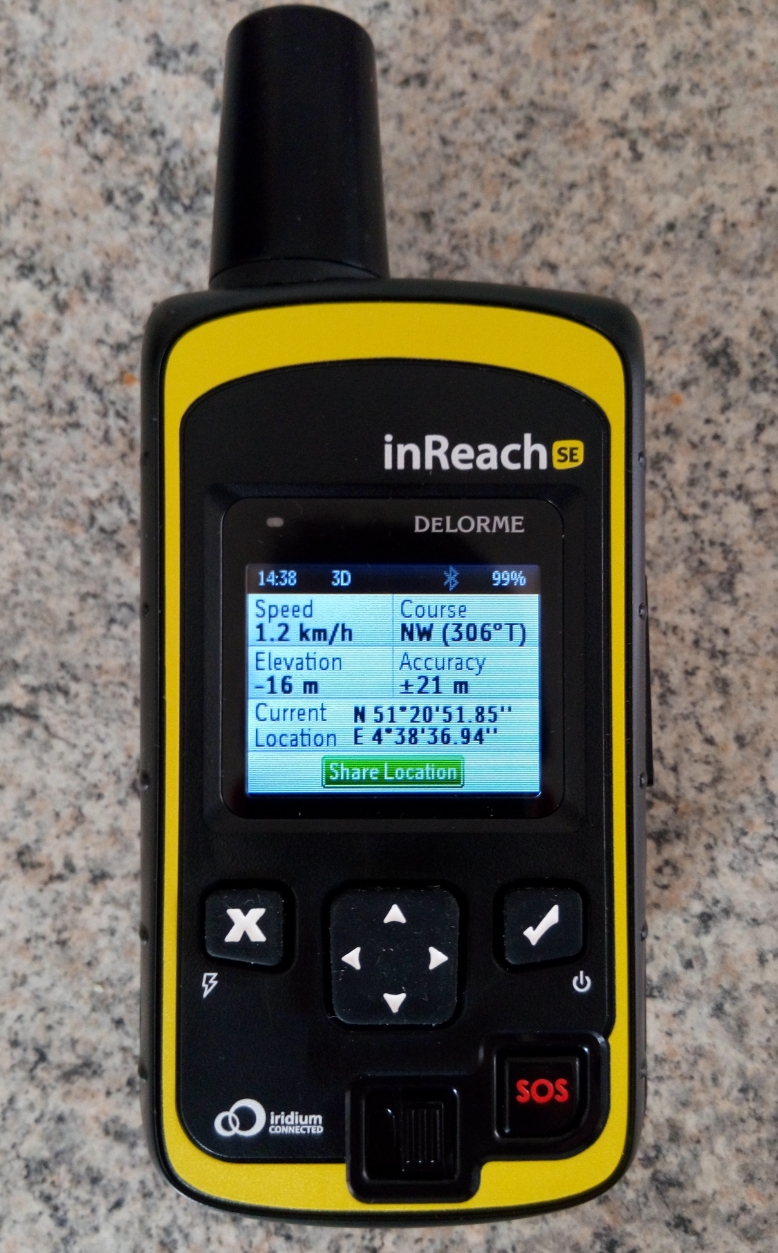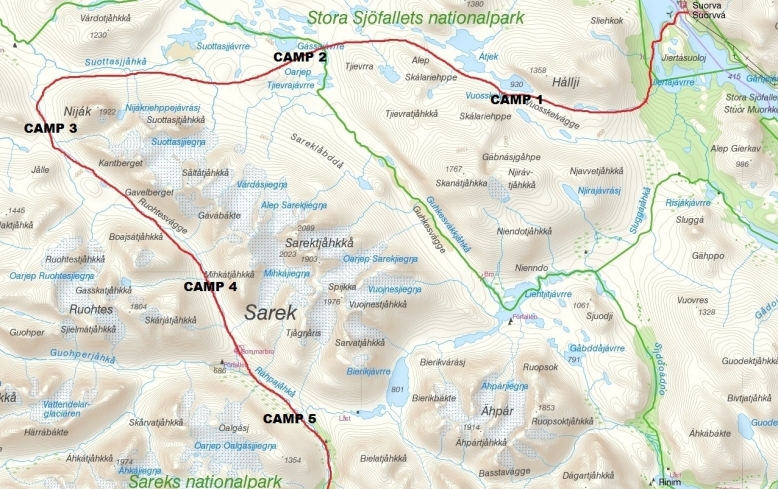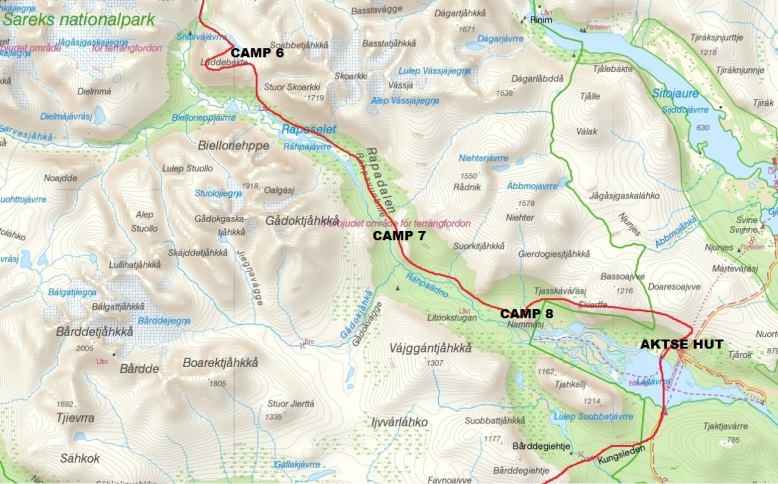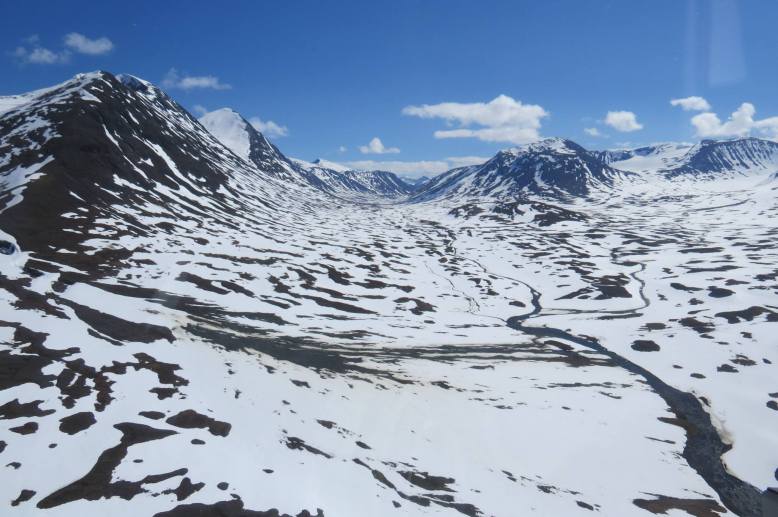After enjoying hiking the Padjalantaleden last year, I’m heading far up north in Sweden once again. Apart from some minor issues all went pretty well last year.
I’m currently working on writing a report about the 2016 trip.
I’ll try to finalise the Dutch version before my departure, but I’m not sure if I’ll have enough time for it.
In less than two weeks I’m starting what will most likely be the most challenging journey of my life. I must say I’m really looking forward to it and I’m pretty excited already.
At the same time I must admit I’m a bit anxious aswell.
On the menu is a 12 day trip through the national parks Störa Sjofallet and Sarek.
I’ll be covering well over 160 kilometers and 3.500 metres in elevation.
That is assuming I don’t stray from my route or get lost offcourse 😉
Both national parks are part of the Laponia area, which is protected by UNESCO and is part of it’s World Heritage List.
Laponia is home to the Sami people, one of the last few people on earth with an ancestral way of life, based on the seasonal movement of livestock.
Most of the Sami settlements are in Padjelanta though.
The landscape in Störa Sjofallet and Sarek is rough and has gigantic proportions.
Turbulent streams have carved valleys through the many 2000+ metre peaks.
Boulder fields, snow, river crossings, swampy terrain,… will make this trip a legit outdoor challenge.
With glacial sediment feeding the rivers, the views on the river delta’s in Sarek are quite exceptional.
Sarek especially has quite the reputation for the possibility of very foul weather and harsh conditions. It is sometimes called the “European Alaska”.
This may be a bit of an exaggeration, but it is a very remote place indeed.
Obviously at this time I’m in full-preparation-mode.
I’m real busy fine-tuning and gathering my gear, defining the route, looking for possible camp sites, …
Also a big difference compared to last year’s hike is that in Sarek there are no marked trails or anything like it. Apart from the construction of some essential summer bridges, nothing is done here to accommodate hikers.
There is one small hut with an emergy phone, but that is basicly it.
Navigation will be an essential part of the trip and obviously there is also no cell phone coverage.
I’ve had some advice from a fellow hiker who lives nearby and decided to buy a satelite phone.
The Delorme Inreach SE costed me around €270 but I think going alone it is an essential tool.

With my Inreach I’m able to send messages to family members and send an SOS signal in the case of an emergency.
It is not really designed as a GPS, but it can however provide current coordinates.
I will be mostly relying on my map and compass, but having coordinates definitely is very helpful.
Now let’s take a brief look at the route I’m planning. The next two maps show the entire route, apart from the last 40 kilometres.


The journey starts at Suorva, where I’ll be crossing the dam.
This is forbidden in theory, but in Sweden people have common sense…
Through the fence there is a small gate that is left open for hikers 🙂
Immediately I have to climb up 500 metres in elevation and head west.
Walking around the remarkable Nijak peak, I’ll be entering the valleys of Sarek.
The final 40 kilometres which are not shown I’ll be hiking on the Kungsleden (“King’s trail”).
This is probably the most popular long-distance hike in Sweden.
This trail is both marked and less demanding.
There’s tons of stuff to tell about the entire route, but I’m not gonna go into too much detail now. I am however especially looking forward to climbing Laddebakte (1537m) and Skierffe (1179m). Both peaks offer incredible views over the Rapa valley and river.
I’ll be ending my trip in the mountain station of Kvikkjokk where a warm bed and excellent restaurant will await me 🙂 You couldn’t really call Kvikkjokk a village though, as only 11 people permanently reside there!
In my opinion gathering information is key to a succesful hiking trip.
it is 2017 and even this high up north social media is finding it’s way.
There are a few Facebook pages from nearby mountain stations and helicopter companies that provide very usefull updates.
On one of these pages I found some recent pictures.
The following picture was taken on June 29th in Ruotesvágge.
This is the valley I should reach on day 4.
So on the map it is situated between “CAMP3” and “CAMP4”.

As you can see there is still a lot of snow. It is however melting fast these days.
But still I’m a bit worried about high water levels.
Getting your feet wet at times is pretty normal in Sarek, but I hope it’s not gonna be too much to handle. I’ll surely carry a few extra pair of socks 😉
I’m also still a bit undecided about my choice of footwear.
I have a solid pair of mountain boots (B-type), but recently I bought a pair of trailrunners which I really like a lot. I think both options have plusses and minusses.
For the river crossings I’ll probably be wearing an old pair of running shoes again.
For now I have to stop typing and get some stuff sorted out.
Thanks again to Ivo VM for the advice!
I’m now gonna try out the tent that you handmade.
Hopefully you guys have enjoyed the read.
Feel free to contact me for any questions you might have.
Cheers
Kevin